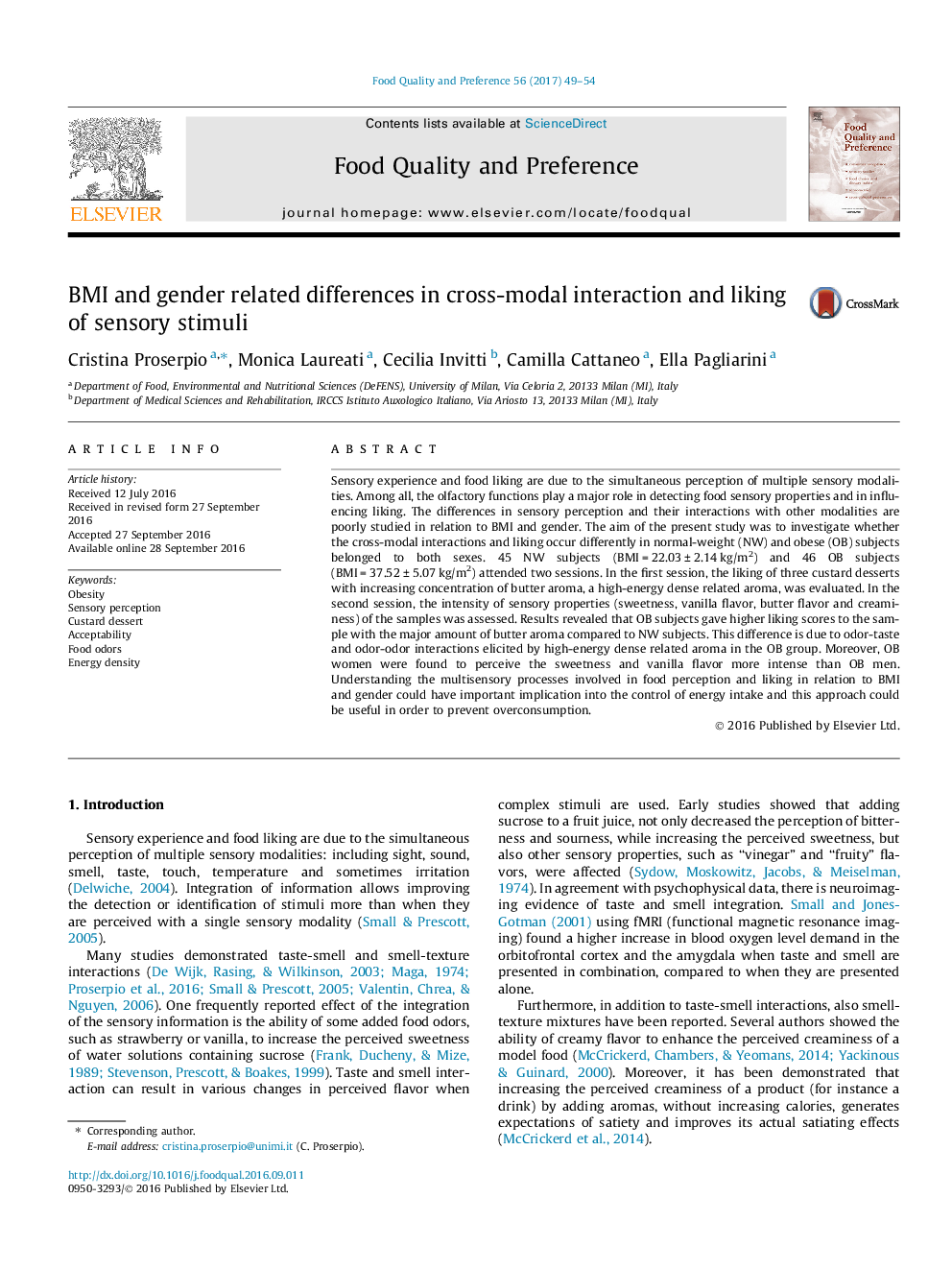| Article ID | Journal | Published Year | Pages | File Type |
|---|---|---|---|---|
| 4316827 | Food Quality and Preference | 2017 | 6 Pages |
Abstract
Sensory experience and food liking are due to the simultaneous perception of multiple sensory modalities. Among all, the olfactory functions play a major role in detecting food sensory properties and in influencing liking. The differences in sensory perception and their interactions with other modalities are poorly studied in relation to BMI and gender. The aim of the present study was to investigate whether the cross-modal interactions and liking occur differently in normal-weight (NW) and obese (OB) subjects belonged to both sexes. 45 NW subjects (BMI = 22.03 ± 2.14 kg/m2) and 46 OB subjects (BMI = 37.52 ± 5.07 kg/m2) attended two sessions. In the first session, the liking of three custard desserts with increasing concentration of butter aroma, a high-energy dense related aroma, was evaluated. In the second session, the intensity of sensory properties (sweetness, vanilla flavor, butter flavor and creaminess) of the samples was assessed. Results revealed that OB subjects gave higher liking scores to the sample with the major amount of butter aroma compared to NW subjects. This difference is due to odor-taste and odor-odor interactions elicited by high-energy dense related aroma in the OB group. Moreover, OB women were found to perceive the sweetness and vanilla flavor more intense than OB men. Understanding the multisensory processes involved in food perception and liking in relation to BMI and gender could have important implication into the control of energy intake and this approach could be useful in order to prevent overconsumption.
Related Topics
Life Sciences
Agricultural and Biological Sciences
Food Science
Authors
Cristina Proserpio, Monica Laureati, Cecilia Invitti, Camilla Cattaneo, Ella Pagliarini,
